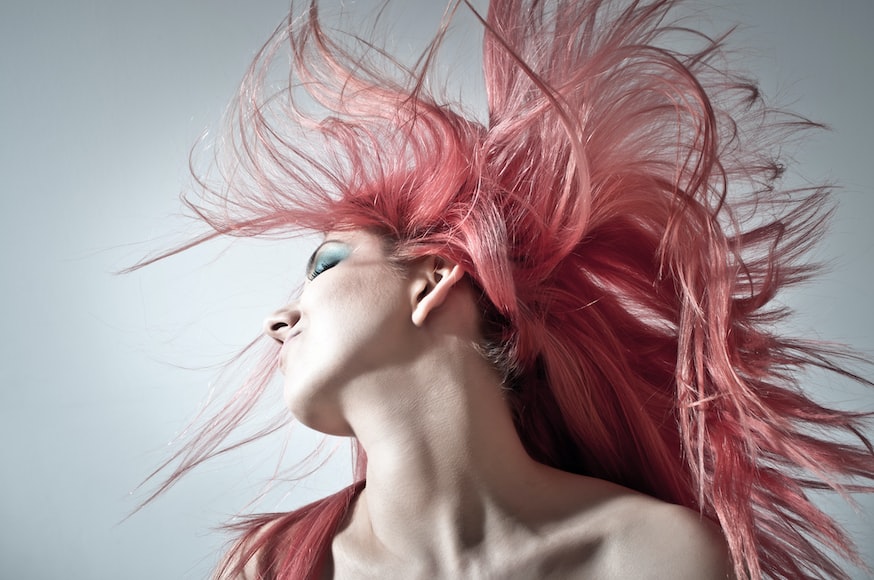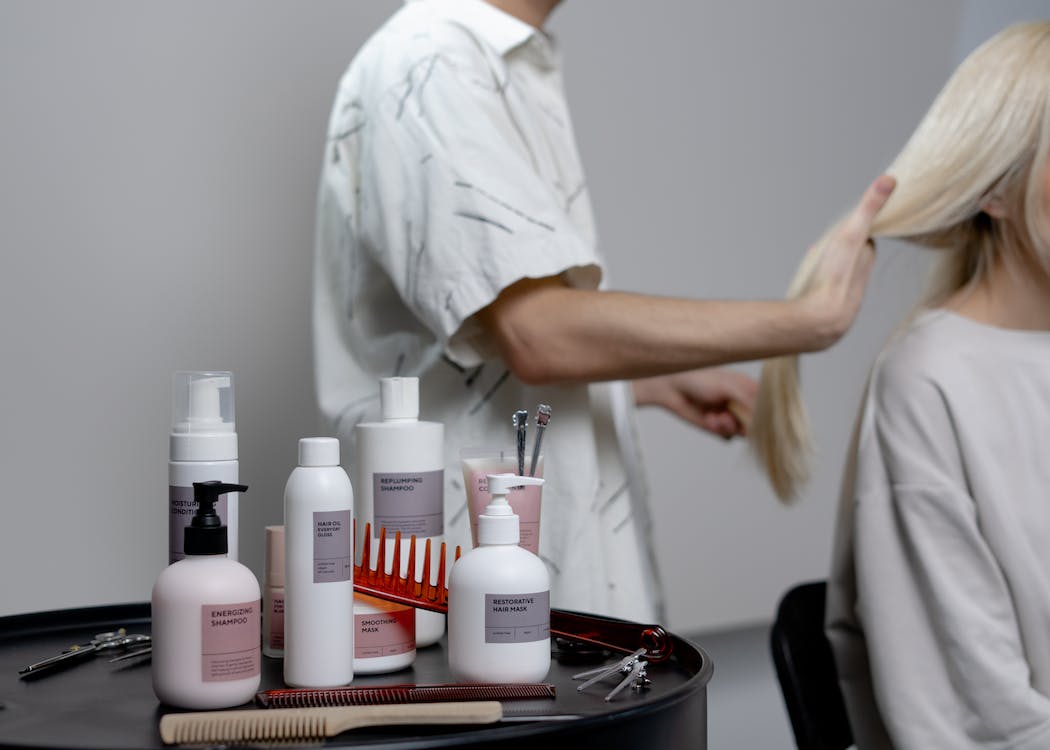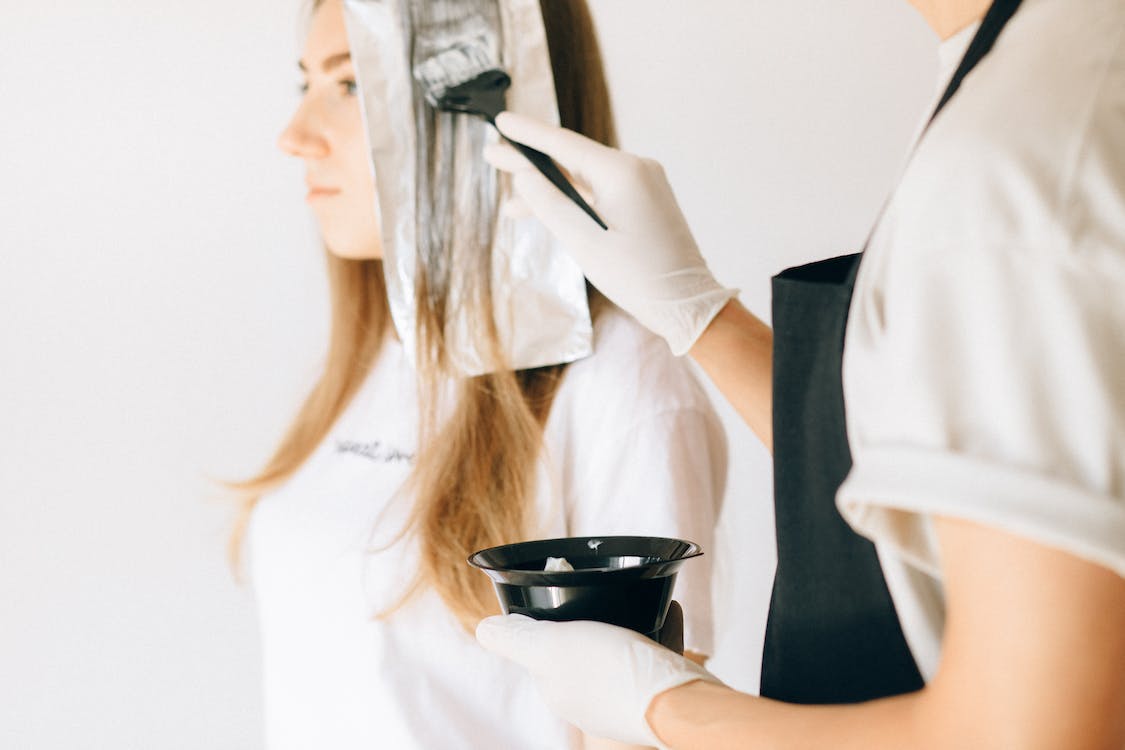
Image by George Bohunicky on Unsplash
Hair is like a crown for many. It’s typically one of the first things people notice about you. Making it look pretty is essential because it can affect first impressions.
You do many things to your hair. Most of the time, you tie it back or cut it, while sometimes, you go to the salon for treatments. Many factors and environmental exposures can damage your hair as you perform daily tasks. One potential factor that can cause damage is hair coloring.
For many, hair coloring is self-expression. Putting color in their hair can boost their self-confidence. For others, it can be a fashion style or hobby that fuels their adventurous sides. Either way, hair coloring can be part of their daily lives.
You might be thinking of getting your hair colored, or you already have color-treated hair. With many people dyeing their hair, the global hair coloring market is seeing a 36.2 billion USD growth by 2027.
Since hair coloring can cause damage, you should maintain the health of your hair when using it. For this reason, your color-treated hair needs keratin. Keep reading to know why you should nourish your color-treated hair with keratin.
What are color-treated hair and keratin?
Color-treated hair is hair that has gone through any hair dyeing process. These processes can be balayage, highlights, or permanent coloring. All of them can lighten the hair to deposit color. Bleaching may be done if you want to have a vibrant hair color.
You can color your hair at home or have it colored at the salon. However, most hair experts recommend getting it done at salons so they can assess your hair condition. It can be costly, but the risks of at-home color treatments can be higher than in salons. Either way, it’s still up to you.
Your body naturally produces chemicals and proteins. One of these proteins is keratin. It is a fibrous protein in your hair, skin, and nails. Some of your glands and organs may also contain keratin.
Keratin can protect your body by helping wound healing and supporting your skin and nail health. It’s a substantial protein that cannot be dissolved in alkaline, solvents, diluted acids, or water. Even your body’s chemicals may not affect it. This is why many think that keratin treatments are helpful, especially for hair.
What are keratin treatments?
Keratin treatments are commonly known as hair treatments. Hair salons do this chemical process to make frizzy hair smooth and shiny. Some can straighten your hair, while others only relax and loosen the curls.
Different keratin treatments include Brazilian blowouts, soft keratin, Japzilian keratin, and keratin express. They all have distinct formulas fit for various hair-smoothing needs.
Your hair can look good after being treated with color. However, it can become dry, fragile, and breakage-prone over time. Treating your damaged color-treated hair can be difficult and time-consuming, but keratin treatments are one of the ways to improve its condition.
Since they can produce different results, not all keratin treatments are the same. It’s essential to know that some treatments may not suit certain color-treated hair types and conditions. You should consult a professional hairdresser before undergoing a keratin treatment.
Image by Nataliya Vaitkevich on Pexels
Importance of Keratin to Color-Treated Hair
Color treatments can damage your hair and make it dull. It may no longer be enough to simply use shampoo and conditioner, even if you make your hair products yourself to ensure that they’re safe for your scalp. However, infusing keratin back can bring back its life. Below are the reasons why it is essential for your color-treated hair.
Strong, smooth, and shiny hair
As keratin penetrates back into your hair from the treatment, it can rebond and strengthen your strands, making it durable to breakage. After the process, you can see your hair looking healthy, smooth, and shinier than before. The shine can also make your color-treated hair silky to the touch.
As you continue your day, your hair may be exposed to many damaging factors. Keratin can protect your color-treated hair from sunlight exposure and environmental damage like air pollution. The treatment can bring the glow back to your hair and stimulate healthy growth.
Results can last for weeks
The process of keratin treatments depends on their formulas. It’s also based on your hair texture and thickness. You can expect a keratin treatment to last within two to four hours.
Keratin treatments are not permanent, but their results can last for weeks when you wash correctly and use appropriate hair care products. With diligent aftercare, it may even last up to six months.
Easy-to-comb hair
Your color-treated hair can get frizzy, making it hard to comb and untangle. With the help of keratin treatments, your hair can be more manageable. It can be easy to comb, style, and frizz-free. You may not need to worry about spending as much time combing it.
When you finally wash your keratin-treated hair, it can dry quickly. This lessens the need for heat exposure from blow drying. Less heat exposure can make your scalp healthier and help your hair grow longer. It may also be eco-friendly because you’re not using electricity.
Disadvantages of Keratin Treatments
Keratin treatments can provide many benefits to your color-treated hair, but they also have disadvantages. You shouldn’t only consider their benefits because your safety is essential. Below are the potential drawbacks of keratin treatments to your hair, health, and life.
Formaldehyde exposure
Some keratin treatments and products include a chemical called formaldehyde. Formaldehyde is a type of volatile organic compound (VOC) that is a colorless and flammable chemical. It can also be found in resins, building materials, and household and farming products. Even gas stoves and cigarettes can emit this VOC.
Exposure to formaldehyde can lead to serious health issues such as skin, eyes, nose, and throat irritations. In high doses, it can cause some types of cancers.
Many keratin treatments include this chemical because it can straighten the hair. When these keratin treatment solutions are applied to your hair, heat is used to seal them. As the solution heats, formaldehyde is released as a gas into the air. If the salon doesn’t have proper ventilation, you and your hairstylist can be at risk.
You don’t have to worry because there are salons that offer formaldehyde-free keratin treatments. Many formaldehyde-free Brazilian blowouts are available for you to use. The drawback is that it can be time-consuming to find one.
You can check the US Food and Drug Administration’s (FDA) cosmetic regulations for keratin treatment products. Consulting your hairdresser also helps.
Expensiveness
Keratin treatment costs can vary depending on the salon’s location, popularity, treatment type, hair condition, and thickness. The prices can range from $82 to $500, which can be costly. At-home keratin treatments may also have cost differences from salon-provided ones.
In keratin treatments, you should also consider factors like the hairstylist’s experience, type of products, and hair length. You can opt for at-home keratin treatments and save $100 to $300, but they may not last long.
At-home keratin treatments are ideal if you’re living on a daily budget. However, you should research everything about them to prevent potential harm and risks to your skin and hair. They may be cheaper but also dangerous and harmful when done alone.
Nonetheless, it’s your money, and you decide where to spend it. You can avail yourself of keratin treatments from a salon, but expect to spend a considerable amount.
Difficult maintenance
Keratin treatments are not the end all be all of your hair care. It doesn’t stop there because it should be maintained. Generally, your stylist will tell you what to do after the treatment process.
For example, water and washing types are considered in keratin treatment aftercare. These crucial factors are necessary to ensure that the treatment stays longer to keep your hair shiny and healthy-looking. However, this maintenance can be challenging to keep for some.
You may not have the time to maintain your keratin-treated hair because of work or other obligations. Keeping a maintenance schedule can also be complicated because you may forget it. Since maintenance is crucial and complex for keratin treatments, they are also not advisable for pregnant women. You don’t want to expose your fetus to the chemicals you need to use for these maintenance routines.

Image by Cottonbro Studio on Pexels
Keratin Treatment Aftercare
Aftercare is crucial for keratin treatments. If you want the smoothness and shine to stay longer on your hair, you should listen to your hairstylist’s aftercare advice. Below are the aftercare steps to take after a keratin treatment.
1. Avoid washing your hair
The keratin treatment may continue to seep through your hair after its application, making your hair fragile for a few days. You shouldn’t wash your hair for the first three or four days. Your stylist will usually tell you how long it takes before you can rewash your hair after the treatment.
Washing time can also vary depending on the type of keratin treatment used. Following your hairstylist’s advice is necessary to ensure and maximize the treatment effects.
2. Use keratin shampoo and conditioner without sulfate
When your hair is ready to be washed, you should pay attention to the products you use. It’s vital to use keratin shampoo and conditioners that are sulfate-free. Sulfate is a harsh chemical that can strip the keratin from your hair. As a result, your hair may become dry and frizzy immediately.
Sodium Lauryl Sulfate (SLS) is the sulfate used in cosmetics and personal and cleaning products. It’s a surfactant that produces bubbles and foams in your shampoo when lathered. This is how dirt, oil, and product buildup are cleaned from your scalp and hair.
Sulfates are effective in cleaning, but too much can leave your scalp feeling parched. It may also cause irritations, redness, and itching if you have sensitive skin. You can research sulfate-free hair products or get recommendations from your stylist.
3. Don’t tie your hair
Like most hair treatments, a keratin treatment can leave your hair vulnerable for the first days or weeks. This is because the treatment needs ample time to take effect completely. Many things are to be avoided, such as pulling, tugging, or using accessories, because they can hinder the treatment from seeping through.
One of the things to avoid is hair ties. Tying your hair during the first few days after the treatment can leave creases and dents, preventing the straightening effect. Even tucking behind your ears can do the same. For these reasons, it’s best to do nothing to your hair after the treatment.
You should hang your hair loose and be tie-free to prevent snags and knots. Keep bobbles, scrunchies, and elastic bands out of your hair. Also, try not to touch your hair constantly to ensure that it hangs straight and loose. When you follow these steps diligently, you can tie and style your hair again after two weeks.
4. Use silk pillowcases when sleeping
Sleeping is a vital part of life. When you sleep, your hair can get tangled because of unconscious movements. By morning, you may wake up to completely messed up hair. You don’t want this for your newly keratin-treated mane. One of the crucial factors in keeping your treatment healthy is pillowcases.
Use a silk pillowcase since it is smooth and can reduce the amount of friction between your hair and the pillow. Change the pillowcase of every pillow that you use. Note that cotton pillowcases can cause frizz and potentially ruin your treatment.
Additionally, let your hair down while sleeping. This is to prevent creases and waves. You may also use satin pillowcases if you don’t have silk ones.
5. Blow dry after sweating
After the treatment, you continue your lifestyle, which may include sweaty activities. You probably have a workout routine or hobby sports that you follow religiously. Remember that sweat is still water, and the effect of the keratin treatment can be compromised when your hair gets a little wet.
Since you need to keep your hair dry, dry it immediately after physical activity that causes you to sweat. Blow dry your hair and iron it with medium to low heat. You should also avoid swimming, saunas, skiing, and skating.
Keep Your Color-Treated Hair Healthy With Keratin
Keratin is a natural protein in your body, and keratin treatments can bring life back to your color-treated hair. They have benefits, but they also have disadvantages and side effects. For example, continuous keratin treatments may also dry out your hair. You should know how and when to do keratin treatments to maintain your hair’s health and beauty.




